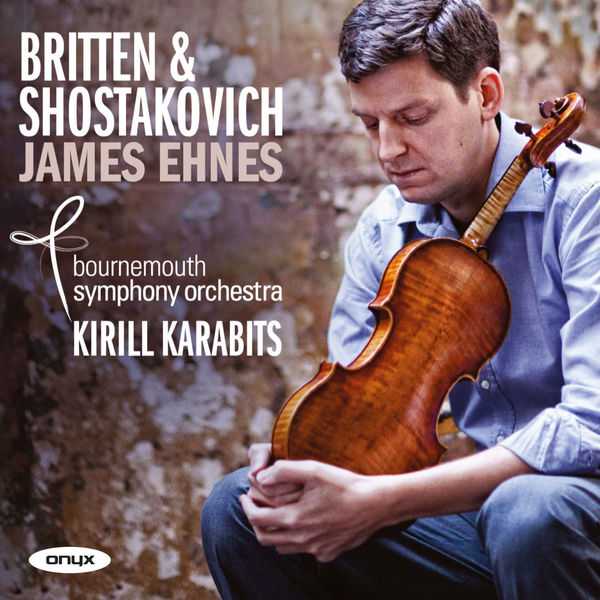
Composer: Benjamin Britten, Dmitri Shostakovich
Performer: James Ehnes
Orchestra: Bournemouth Symphony Orchestra
Conductor: Kirill Karabits
Format: FLAC (tracks)
Label: Onyx
Catalogue: ONYX4113
Release: 2013
Size: 277 MB
Recovery: +3%
Scan: cover
Britten: Violin Concerto in D minor Op. 15
01. I. Moderato con moto
02. II. Vivace – Cadenza
03. III. Passcaglia: Andante lento (Un poco meno mosso)
Shostakovich: Violin Concerto No. 1 in A minor, Op. 99
04. I. Nocturne: Moderato
05. II. Scherzo: Allegro
06. III. Passacaglia: Andante
07. Cadenza
08. IV. Burlesque: Allegro con brio – Presto
After a series of critically acclaimed recordings on ONYX, most recently of the Mendelssohn (ONYX4060) and the Tchaikovsky concertos (ONYX4076), James Ehnes teams up with the Bournemouth Symphony Orchestra and its charismatic music director, Kirill Karabits, in Violin Concertos by Benjamin Britten and Dmitri Shostakovich.
The Britten an early work, was completed in the September of 1939, just as World War II broke out. Britten had already composed ‘Our Hunting Fathers’ in 1935 (words by W.H Auden), and this work’s ferocious condemnation of political extremism and man’s inhumanity can to some extent be detected in the concerto. The barbarity of the Spanish Civil War (the concerto was written for the young Spanish violinist Antonio Brosa), the rise of Hitler’s Nazis and the persecution of the Jews appalled Britten. Peace and reconciliation was his credo, as exemplified in the later ‘War Requiem’. In the scherzo tuba and piccolos present the listener with an image of the horrifying abyss mankind was lurching towards.
The first of Shostakovich’s two violin concertos was composed in 1948 for David Oistrakh. It had to wait until 1955 for its premiere due to the ban on ‘serious’ music by the notorious Zhdanov Conference and Party Decree of 1948. Only ‘patriotic’ music was allowed. With Stalin’s death in 1953 Shostakovich was finally able to exert his artistic freedom. It is a truly symphonic work in scale, grand, dramatic and cast in four movements with a huge cadenza placed before the finale.
Only in the finale does the sun burst out in a brilliant helter-skelter coda.
Pairing the Violin Concerto, Op. 15, of Benjamin Britten with the Violin Concerto No. 1 in A minor, Op. 77, of Dmitry Shostakovich is thoughtful programming, for not only were the two composers friends, they were also among the leading tonalists of the mid-20th century, and in many ways, their approaches to composition were quite similar. Both concertos have an edgy, sardonic tone that is far removed from the violin concertos of Beethoven, Brahms, and Tchaikovsky, and formally, both works have cadenzas that lead into the Finale, as well as passacaglias, unusual features for modern violin concertos. Perhaps most significantly, they both show a strong emphasis on technical display, as opposed to the soaring lyricism and expressive drama of Romantic concertos. James Ehnes has the skills to pull off the works’ most difficult challenges, and his playing is strong, physically present, and easily heard above the Bournemouth Symphony Orchestra at its loudest. Even more important than mastering the technical aspects is the feeling Ehnes has for the mordant humor and elegiac pensiveness Britten and Shostakovich share, and Kirill Karabits leads the orchestra with sensitivity to the shifting moods in both concertos. The reproduction is well-balanced and clear, and Ehnes is centrally placed, while the orchestra is fully audible without being overwhelming.